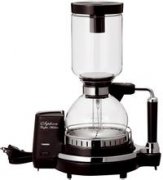Coffee culture common sense Coffee name comes from Ethiopian kaffa
Ethiopia in East Africa means "land inhabited by people tanned by the sun" in ancient Greek. Ethiopia's unique cultural tradition, spectacular scenery, pleasant climate, rich animal and plant resources, important places of interest, hospitality and friendly people make it one of the major tourist destinations in Africa.

Do you know? The root of coffee is in Ethiopia. It is said that the word coffee in English also comes from the place name "Kaffa" in Ethiopia. Legend has it that around 900 AD, when a shepherd in the Cafa region of Ethiopia was grazing in the mountains, he found that the sheep were competing for a kind of red berries. After eating, the sheep were excited and reacted abnormally. The shepherd was scared all night because he thought his sheep had eaten some harmful food. Who knew the sheep were safe and sound the next day. This unexpected discovery prompted shepherds to collect the wild fruit and boil juice to quench their thirst. He felt that the fruit juice was mellow and excited after drinking it. So he began to plant this plant, which led to the development of large-scale coffee cultivation, and the name of coffee evolved from the curry method. After that, coffee spread from Ethiopia to the world.
Coffee is as pure as a thoroughbred.
Ethiopia grows coffee in different climatic zones, so it has more than 140 farm varieties, and fresh coffee is produced all the year round. The quality of Ethiopian coffee varies according to different elevations and regional ecological environment. The Harar coffee in the southeast highland is a typical Muha coffee with strong aroma; the coffee produced in southwest Wollega has a rich fruity flavor; Limu coffee has wine and spice flavor; Sidamo coffee is mild, full-bodied and sour, while Yirgacheffee coffee has floral flavor. Taste Yega Xuefei, chocolate and sour taste more intense, like lemon flying, with a trance of flowers.
Interestingly, Ethiopians also put pictures of horses on the coffee package to show the purity of the coffee. It is said that in the era when horses were the main means of transportation, Ethiopians were proud that Ethiopia had the best thoroughbred horses in the world. Now they give this pride to Ethiopian coffee, "high-quality coffee should be as pure as thoroughbred horses". As a result of adhering to this concept, the taste of coffee here is still so mellow.
Coffee drinking ceremony is well-known.
In traditional Ethiopian families, coffee is drunk two or three times a day, with a variety of drinking rituals or rituals. In the evening, the whole family sat on the ground around a small charcoal stove. The ground around the charcoal stove is covered with specially cut or bought grass. This is a special grass specially used for coffee rituals. When the small charcoal stove is lit, it is necessary to specially pick out a few pieces of white charcoal with thick smoke, shake it in every corner of the house, and then put it on the edge of the stove and let it burn out or extinguish itself. In this way, for a period of time, the whole house or courtyard is shrouded in smoke.
It is usually a teenage girl who prepares coffee for everyone at home. She first grabbed a handful of light green raw coffee beans, put them in a small iron pot on the charcoal stove, scooped up clean water, and scrubbed them with both hands. Then roast the coffee beans with a small wooden shovel, and soon the coffee beans begin to turn dark black and emit an attractive fragrance. When the girl thought it was time for the fire, she picked up the handle of the iron pot and shook the smoky coffee beans and sent them to everyone for everyone to smell. After everyone nodded and said yes, she poured the cooked beans into a small mortar and pounded them with a big iron bar nearly one meter long and as thick as the child's arm. Soon, the handful of beans was mashed into powder.
The girl scraped out the powder little by little with a small wooden spoon and poured it into a clay pot with a thin neck, bulging belly and big ears, added clean water, and boiled it on a small stove. The water soon boiled and boiled for a while, and the fragrance overflowed. The girl placed several porcelain cups the size of a wine cup on a small wooden box, then picked up the big ears of the coffee pot and filled each cup one by one, then put down the pot and toasted the people sitting around with both hands. This process usually lasts 30 minutes.
Important Notice :
前街咖啡 FrontStreet Coffee has moved to new addredd:
FrontStreet Coffee Address: 315,Donghua East Road,GuangZhou
Tel:020 38364473
- Prev

You can't face life without a cup of coffee in the morning.
Only at the coffee table can you see the playful side of Europeans. Gossip is spread over coffee tables, and without coffee in continental Europe, life would be half as bad. When coffee was introduced to Europe in the 17th century by a Venetian merchant who wanted nothing more than to make money, he had no idea how this mysterious little bag of black powder would revolutionize Europe for centuries to come.
- Next

Basic knowledge of high-quality coffee culture in Southeast Asia
I don't know how you are in other parts of Southeast Asia, but I am always at a loss on the streets of Singapore, on the corner of Vietnam and on a sign in Malaysia. Although transliteration of things like coffee was widely used by clever ancestors in the early years of its spread, there is not much audio-visual barrier, even though Singaporeans always refer to coffee as Kopi, which is pronounced from Hokkienese.
Related
- How did the Salvadoran coffee industry develop in Central America?
- What exactly does the golden cup extraction of coffee mean?
- The Origin of Coffee flower
- [2023 Starbucks World Earth Day] there are more meaningful things besides free Starbucks coffee!
- What kind of coffee is there in Spain? 9 Flavors of Spanish Coffee
- Aromatic African coffee| Kenya's coffee culture and historical production area
- Liberica Coffee Bean knowledge: the characteristics of Liberian Coffee beans of the three original species of Coffee beans
- The origin and formula of Spanish latte introduces the taste characteristics of Bombon coffee in Valencia, Spain.
- How to adjust the solution of over-extracted coffee
- What is the tasting period of coffee beans? What is the period of coffee and beans? How should coffee wake up and raise beans?

